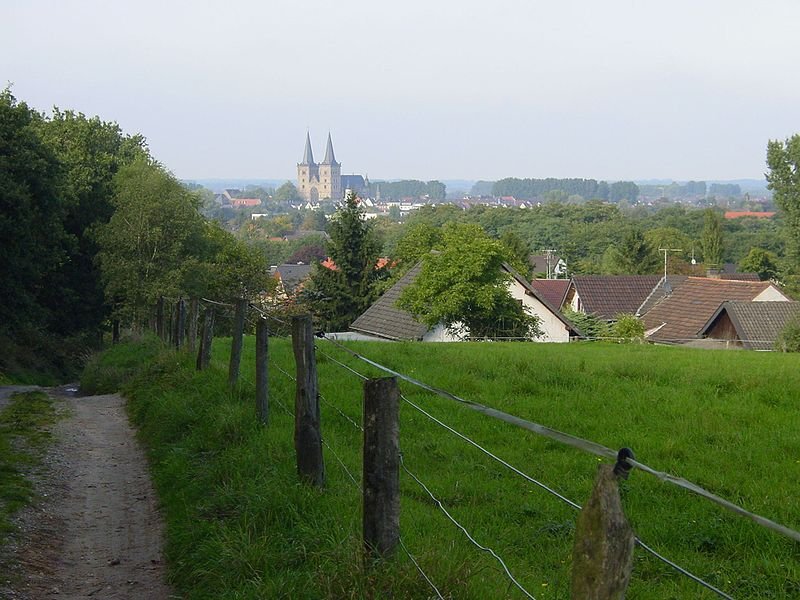 Xanten, Germany
Xanten, GermanySource: https://commons.wikimedia.org/wiki/File:XantenBlickVonHees.jpg
Author: Xantener

Xanten is a town in North Rhine-Westphalia, Germany. It is located in the district of Wesel on the western part of the country, near the border with the Netherlands. It is the only German city whose name begins with an X. The town covers 72.39 sq km (27.95 sq mi) and has a population of 22,000 (2011 estimate). It observes the Central European Time (UTC+1) and in summer the Central European Summer Time (UTC+2).
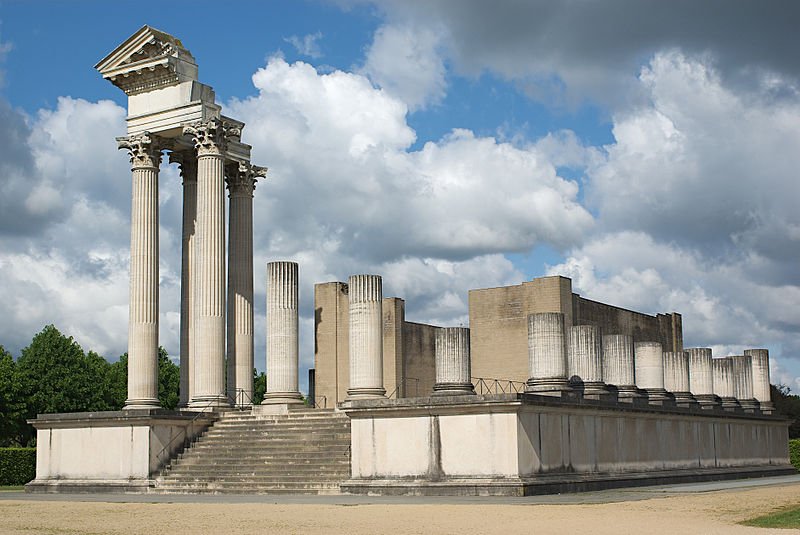 Reconstructed Roman harbor temple in Xanten, Germany
Reconstructed Roman harbor temple in Xanten, GermanySource: https://commons.wikimedia.org/wiki/File:Harbour_temple.jpg
Author: Tiago Fioreze

While many of the towns in Germany dates back to Roman times, Xanten is one of the few with visible remains from that period, which is now preserved at its archaeological park, one of the largest in the world. Xanten was a major military base for the Romans. At its peak, it was occupied by some 10,000 legionaries.
Roman presence in the Xanten area endured till the 5th century, when regular attacks by Germanic tribes eventually forced the Romans to withdraw. The Franks moved in to settle the area.
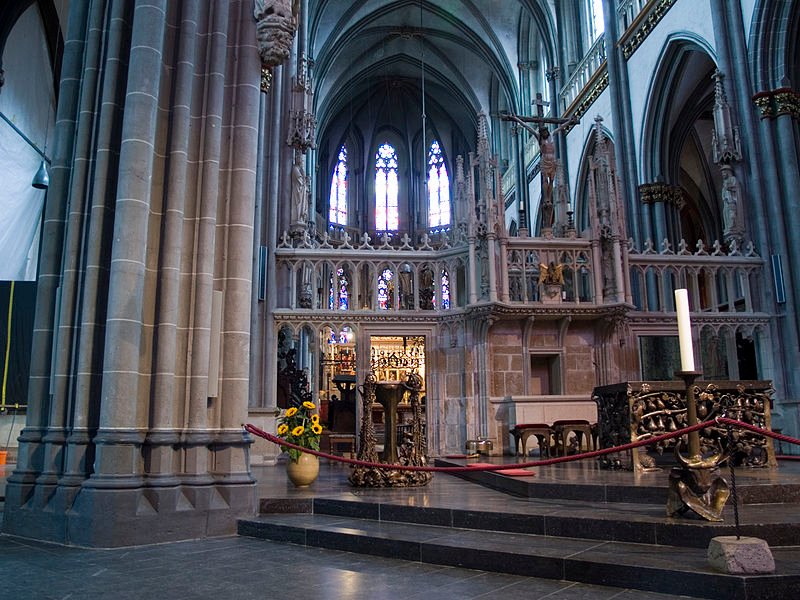 Interior of Xanten Cathedral
Interior of Xanten CathedralSource: https://commons.wikimedia.org/wiki/File:NRW,_Xanten_-_Dom_St.Viktor_01.jpg
Author: Островский Александр, Киев

Xanten derives its name from Sanctos, which means "place of saints", in reference to the grave of the martyr St Viktor. It dates back to the second half of the 8th century. The St Viktor Cathedral was established in 982, though only completed in 1263.
In the Middle Ages Xanten became an important trading town by the river Rhine. However when the river shifted its course away from the town, its importance declined. As such, its population dropped, from 5,000 at the beginning of the 16th century, to half the number by the end of the 18th century.
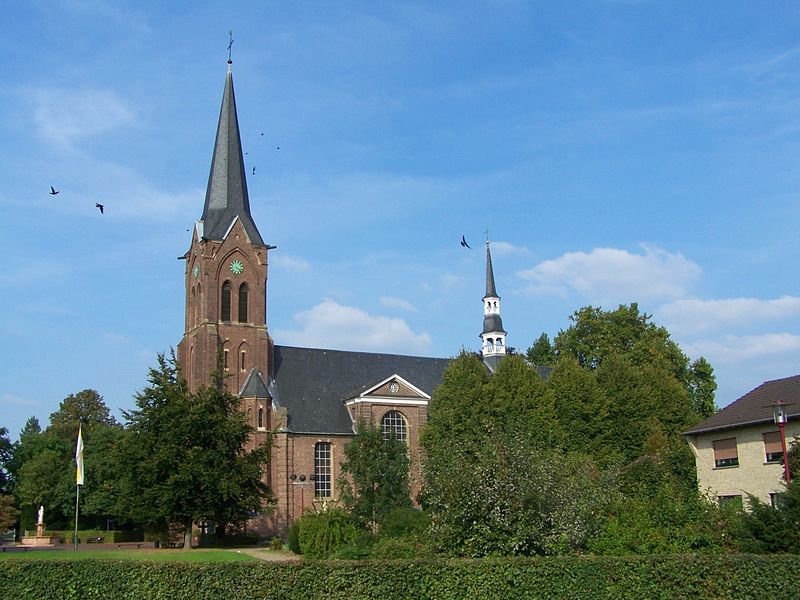 Sankt Mariä Himmelfahrt in Marienbaum, Xanten
Sankt Mariä Himmelfahrt in Marienbaum, XantenSource: https://commons.wikimedia.org/wiki/File:Sankt_Mari%C3%A4_Himmelfahrt_Marienbaum.jpg
Author: Hans-Martin Scheibner

Anti-Semitism erupted in Xanten in 1891, when the five-year-old son of a local cabinet maker was found murdered in a barn, and the crime was blamed on the Jewish community, alleging that it was a ritual murder. The anti-Jew sentiment it aroused caused a drop in the Jewish population from 3,770 before the incident to just 50 in 1905.
Xanten was attacked by Allied forces during the Second World War and its cathedral badly damaged. Eventually Canadian troops took control of the town. Reconstruction of Xanten during the post war period continued until 1966. During this period, it received expelles from eastern Prussia, now part of Poland, leading to a rise in its population by almost 40%. Today Xanten is celebrated for its historic past and is a popular domestic tourist destination in Germany.
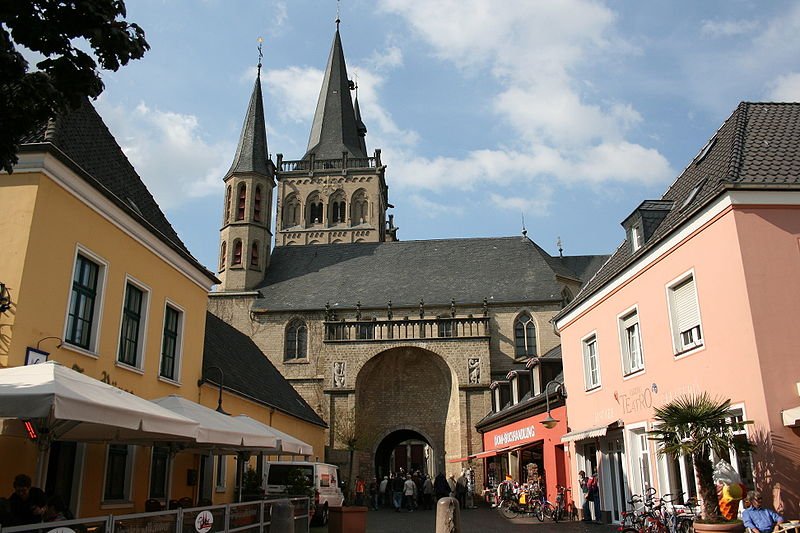 Xanten market square with its cathedral
Xanten market square with its cathedralSource: https://commons.wikimedia.org/wiki/File:Xanten_-_Dom_01_ies.jpg
Author: Frank Vincentz

Visiting Xanten, Germany
Xanten is located between Autobahn 3 (E35) and Autobahn 57 (E31).Places of Interest in Xanten
- Dom St. Viktor
The Cathedral of Xanten, built on the grave of St. Viktor between 1263 and 1517. - Klever Tor
A magnificent double-gate into the medieval town of Xanten. It was built in the late 14th century. - Xanten Archaeological Park
Site of the Roman ruins and includes the reconstructed Roman public buildings. Of particular interest is the Hafentempel, the harbour temple.
 Latest updates on Penang Travel Tips
Latest updates on Penang Travel Tips

Copyright © 2003-2025 Timothy Tye. All Rights Reserved.

 Go Back
Go Back